What is project management?
Since ancient times, project management has been used involving planning and coordination. Whether a small business, a decentralized team, or a global corporation, there should be a channel for managing the projects.
There are many methodologies to use in project management; some companies use Waterfall, Agile, Scrum, etc. But which one is the best methodology for project management?
This is not a simple answer because it depends on many factors. The final choice should be made keeping in mind the nature of your business and its requirements.
Last but not least, in a recently surveyed, 39% of the companies in 2021 said that their organization implemented hybrid project management practices.
Forward-thinking managers and leaders don’t adhere to a single methodology. They become well-versed in many of them and learn to mesh together various practices to manage at the best whatever the project calls for.
Let’s clarify which are the most common and best-in-class Project Management methodologies.
Best in Class Project Management Methodologies
1. Waterfall – planning projects fully, then executing through phases
Waterfall methodology, often called SDLC (Software Development Life Cycle), is a project management methodology theme with a straightforward approach that values solid planning, doing it once and doing it right, instead of the Agile method of phased and iterative delivery. It’s simple to understand because you make a good plan and execute it.
Requirements are defined at the top of the Waterfall before work starts. Work cascades through phases of the project. In a Waterfall model, each step must be completed before the next phase can begin, and there is no overlapping in the stages. Typically, one phase acts as the input for the next step.
2. PMI’s PMBOK – applying universal standards to Waterfall project management
The Project Management Institute’s PMBOK, or Project Management Body of Knowledge, is not a methodology. Instead, the PMBOK “methodology” is a framework of standards, conventions, processes, best practices, terminologies, and guidelines that are accepted as project management industry standards. Even so, the PMBOK framework from the PMI is often considered a traditional methodology.
The PMBOK refers to the five process steps of project management: initiating, planning, executing, controlling, and closing.
3. PRINCE2 – controlled project management that leaves nothing to chance
PRINCE2 is a project management methodology focused on organization and control. It is a structured project management method and practitioner certification program. The acronym PRINCE2 stands for PRojects IN Controlled Environments. It has been adopted worldwide, including in the UK, Western European countries, and Australia. It is a highly process-oriented methodology, dividing projects into multiple stages, all with their plans and processes to follow. The methodology describes inputs and outputs for every project phase so that nothing is left to chance.
4. Agile – collaborating to deliver whatever works iteratively
Agile is an iterative project management and software development approach that helps teams deliver value to their customers faster.
Agile methodologies overview
The Agile Manifesto of Software Development put forth a groundbreaking mindset on delivering value and collaborating with customers when it was created in 2001. Agile’s four main values are:
- Individuals and interactions over processes and tools
- Working software over comprehensive documentation
- Customer collaboration over contract negotiation
- Responding to change by following a plan
What is Agile methodology in project management?
It’s a process for managing a project that involves constant collaboration and working in iterations. Agile project management works on the basis that a project can be continuously improved throughout its life cycle, with changes being made quickly and responsively.
Agile is one of the most popular approaches to project management due to its flexibility, adaptability to change, and high level of customer input.
5. Scrum – enabling a small, cross-functional, self-managing team to deliver fast
Scrum is an Agile project management methodology involving a small team led by a Scrum master whose main job is to remove all barriers to getting work done. Work is done in short cycles called sprints, and the team meets daily to discuss current tasks and any roadblocks that need clearing. Scrum is a method for managing projects that allow for rapid development and testing, especially within a small team.
6. Lean – streamlining and eliminating waste to deliver more with less
Lean methodology is a project management methodology focused on the theme of efficiency. Arguably the Godfather of Agile, Lean is all about doing more with less. It starts by identifying value and then maximizes it through continuous improvement by optimizing the flow of matter and eliminating wastage.
 7. Kanban – improving speed and quality of delivery by increasing visibility of work in progress and limiting multi-tasking
7. Kanban – improving speed and quality of delivery by increasing visibility of work in progress and limiting multi-tasking
Kanban is a project management methodology focused on Lean principles and a strict process to increase efficiency. It’s similar in many ways to Scrum – it’s about releasing early and often with a collaborative and self-managing team. But compared to Scrum, Kanban is a more evolutionary change, a softer landing into the world of Agile as it’s less prescriptive.
 8. Scrumban – limiting work in progress like Kanban, with a daily stand-up like Scrum
8. Scrumban – limiting work in progress like Kanban, with a daily stand-up like Scrum
Scrumban is an Agile development methodology that mixes Scrum and Kanban. Scrumban emerged to meet the needs of teams who wanted to minimize the batching of work and adopt a pull-based system. A mix of Scrum and Kanban allows teams to adapt to stakeholder and production needs without feeling overburdened by their project methodology. Scrumban provides the structure of Scrum with the flexibility and visualization of Kanban, making it a highly versatile approach to workflow management.
Credit source:https://thedigitalprojectmanager.com/
How to choose the correct project management methodology
Choosing the right methodology is important because it defines how we work. It provides the structures that can guide us toward project success or failure. And since we already know no one-size-fits-all method works for all business types, sizes, or industries, you must put some time and effort into choosing the correct project management methodology for your context.
Here are a few steps to deciding which project management methodology to use in our project:
1. Consider your project factors by their simplicity or complexity.
This includes the project, the client, available resources, project constraints (including the appetite for change and risk), timeline, tools, and people. List these factors and label them according to their simplicity or complexity.
2. Determine the rigidity or flexibility of your work environment.
An Agile methodology can work well for you if you’re working in a dynamic environment with an appetite for evolution and change. If you’re working within very fixed requirements, timelines, and budgets, you might be better off with a Waterfall approach. Along with this consideration of your flexibility, take a look at your constraints and risks. How can you enact processes that minimize key risks and help your teams fit their projects neatly within your organizational constraints?
3. Consider what delivers the most value.
Ask what delivers the most value to the client (the stakeholder or the end-user). Make a list of their needs and use it to pick a way of working that best meets those needs.
4. Leverage your organizational goals.
Use the goals or project objectives you’ve already created as a team or organization to guide your selection of a project methodology. Your methods should be a means to achieve your goals—the best method is the one that shows you towards your strategic objectives most directly with the most significant gains and most negligible negative impact.
5. List your organizational and team values.
Lastly and importantly, do a deep dive into your values. At the end of the day, people carry out methods with habits, opinions, and values. Instead of taking a trending methodology and throwing it at your people, use the ways your people think, relate, and work to build out a process that’s a natural fit.
Conclusion:
Selecting the most suitable project management methodology can be tricky. It depends on so many variables, many of which are outside of our control as project managers.
Project management methodologies are just tools to deliver projects. It’s not worth arguing over the final details of a methodology. We should focus on the bigger picture. The best methodology is one that improves organically, adapting and increasing the value of the output so the sum is greater than the parts.
If you want to find out how Convergence Consulting can help your company to choose the Project Management Methodologies that best match your product development’s requirements, please contact us!
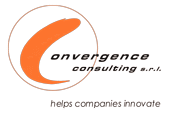

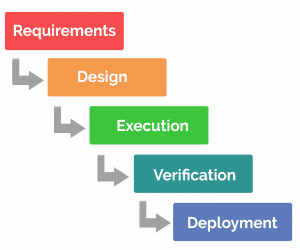
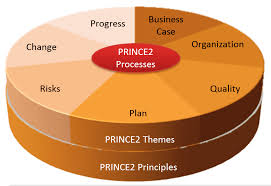

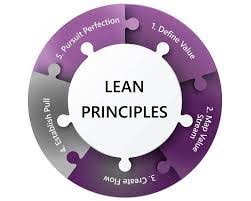 7. Kanban – improving speed and quality of delivery by increasing visibility of work in progress and limiting multi-tasking
7. Kanban – improving speed and quality of delivery by increasing visibility of work in progress and limiting multi-tasking 8. Scrumban – limiting work in progress like Kanban, with a daily stand-up like Scrum
8. Scrumban – limiting work in progress like Kanban, with a daily stand-up like Scrum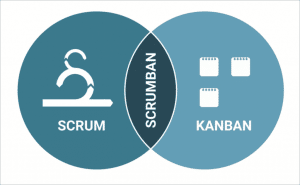

Leave a Reply